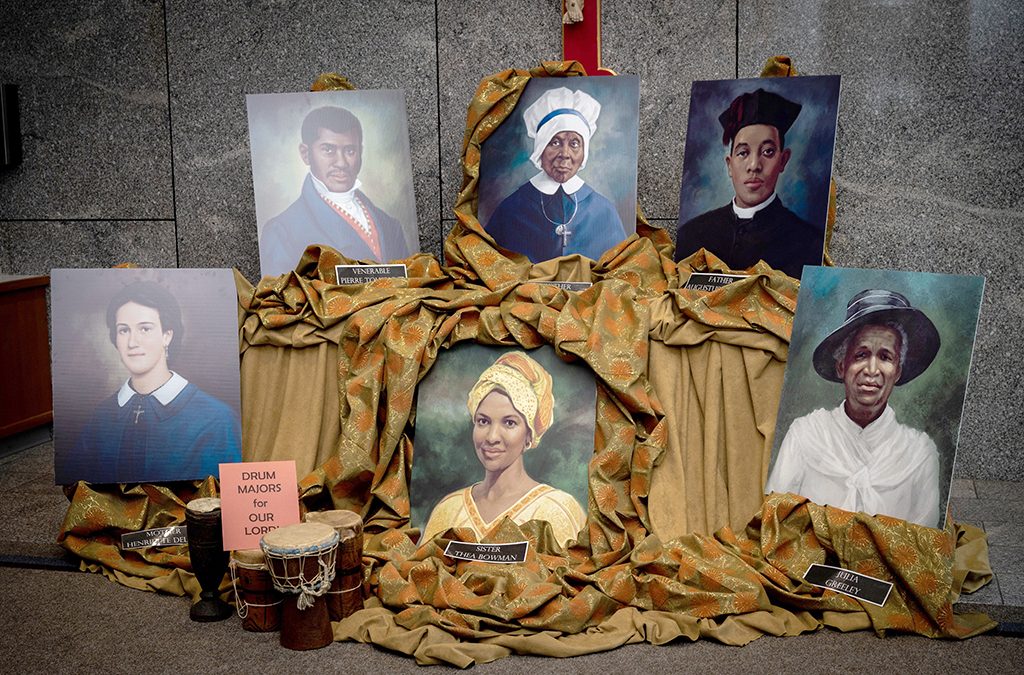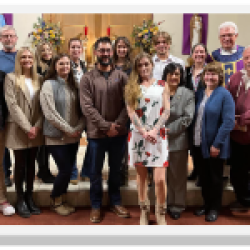By Eileen Jevis
Staff writer
Brief biographies of the six Black Catholics currently being considered for sainthood:
Given the title of Venerable are:
Pierre Toussaint (c. 1788-1853) was a devoted Catholic and daily communicant. He and his wife lived the gospel of hospitality and the call to care for others. Among their many missions, the Toussaints helped raise money to build St. Patrick’s Cathedral in New York City and supported the Oblate Sisters of Providence. Toussaint is the first layperson to be interred in the crypt of St. Patrick’s Cathedral. Pope John Paul II bestowed upon him the title of Venerable in December 1996.
Henriette Delille (1812-1862) was a descendant of one of the oldest racially mixed Catholic Creole families in New Orleans. In 1836, at the age of 24, she had an intense religious experience that put her on a path of devotion and service. She professed vows of poverty, chastity and obedience and founded the community now known as the Sisters of the Holy Family. Pope Benedict XVI declared Delille Venerable in 2010 for being a passionate and tireless servant of God.
Augustus Tolton (1854-1897) was recognized as Venerable in June 2019 by Pope Francis. Referred to as the suffering servant, Tolton was born to slaves who were owned by a Catholic family and was raised in the Catholic faith. Upon the death of his father, Tolton, his mother, and siblings escaped in the dark of night and crossed the Mississippi River into Illinois, a free state. Tolton attended St. Peter’s Catholic School in Quincy, Illinois. He devoted himself to serving God by making his life a living example of God’s words. Tolton studied in Rome to become a missionary priest and celebrated his first Mass in St. Peter’s Basilica. As an inspiring teacher, he attracted black and white worshipers to attend Mass together long before church services were integrated.
Given the title of Servants of God are:
Mother Mary Elizabeth Lange, OSP (c. 1794 -1882) moved from Cuba to Baltimore, Maryland in 1812. Public schools were not open to children of color, so she and her friend Marie Magdaline Balas opened St. Francis Academy in her home. Her missionary work includes starting a religious congregation dedicated to educating African girls. She and other Oblate Sisters of Providence cared for the terminally ill during the cholera epidemic of 1832. They established a home for widows, religious education classes, and founded orphanages for many post-Civil War Black orphans. In 1991, with Vatican approval, Baltimore Archbishop William Cardinal Keeler opened a formal investigation of her life as a Servant of God.
Julia Greeley, OFS (born between 1833 and 1848, died 1918) was born into slavery in Hannibal, Missouri. Freed by the Emancipation Act, she labored for various families and then moved with her employers to Colorado where they introduced Greeley to the Catholic faith. Greely, whose own resources were scarce, was known for pulling a little red wagon filled with food, firewood, clothing, and other essentials through the streets to give to the poor. To avoid embarrassing the people she helped, Greeley did most of her charitable work under cover of night. The Archdiocese of Denver opened Greeley’s cause for canonization in December of 2016.
Thea Bowman, FSPA (1937-1990) was born in Mississippi, the only child of a physician and a teacher. Wanting the best education for their daughter, they sent her to Holy Child Jesus School in Canton, Mississippi. She converted to Catholicism and at age 15 joined the Franciscan Sisters of Perpetual Adoration. Bowman was the only African American in the motherhouse. She earned a doctorate in linguistics and became a college professor. During the 1960s, Bowman experienced a time of transformation influenced by the Church’s liturgical renewal and her growing awareness of her African American heritage. She became a highly acclaimed evangelizer, teacher, writer, and singer sharing the joy of the gospel and her rich culture throughout the world until she died of cancer at the age of 53. In 2018, the U.S. Bishops approved her cause for canonization, and she was declared a Servant of God.






